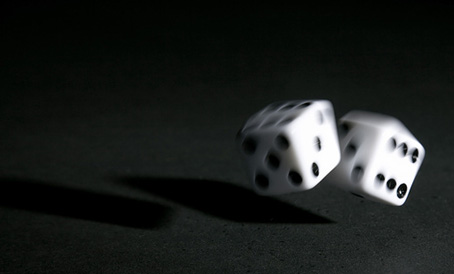

 The Accurate Reloading Forums
The Accurate Reloading Forums  THE ACCURATE RELOADING.COM FORUMS
THE ACCURATE RELOADING.COM FORUMS  Other Topics
Other Topics  Miscellaneous Topics
Miscellaneous Topics  Ikejime
IkejimeGo  | New  | Find  | Notify  | Tools  | Reply  |  |
| One of Us |
For those of you who fish for the table have you tried this? I never have and wonder if there is a noticeable difference in the quality of the fish if processed this way? It looks like it would take a bit of practice to devlope the skill? Ikejime From Wikipedia, the free encyclopedia Tegaki (手鉤) - the tool that is used for performing ikejime. Ikejime (活け締め) or Ikijime (活き締め) is one of the more humane methods of killing fish which also maintains the quality of its meat.[1] The technique originated in Japan, but is now in widespread use. It involves the insertion of a spike quickly and directly into the hindbrain, usually located slightly behind and above the eye, thereby causing immediate brain death.[2] When spiked correctly, the fish fins flare and the fish relaxes, immediately ceasing all motion. Destroying the brain and the spinal cord of the fish will prevent reflex action from happening; such muscle movements would otherwise consume adenosine triphosphate (ATP) in the muscle, and as a result produce lactic acid and ammonia, making the fish sour, soggy and less tasteful.[3] Furthermore, the blood contained in the fish flesh retracts to the gut cavity, which produces a better coloured and flavoured fillet, and prolongs shelf life. This method is considered to be the fastest and most humane method of killing fish.[4] Ikejime-killed fish is sought-after by restaurants as it also allows the fish to develop more umami when aged.[5][6] It is very similar to the technique used on frogs in laboratories called spiking or pithing. Another technique in APEC Air shipment of live and fresh fish and seafood guidelines is described as follows: "A cut is made toward the front of the flatfish severing the major artery and the spinal cord. Placement of the cut is made to preserve the greatest amount of flatfish flesh. This paralyzes the flatfish. A second cut is made in the tail to hasten the removal of blood. Flatfish are then chilled slowly to maintain circulation and facilitate the bleeding process. After the flatfish have been bled, they are transferred to a salt/ice water slurry and chilled to -12°C."[7] Ikejime has been successfully used manually in the tuna and yellowtail industries, along with limited use in sport and game fishing, as it provides a rapid slaughter technique. An alternative to cutting their throats and leaving the fish to die by bleeding, ikejime is used and the fish put straight into ice.[4] Ikejime Federation ~Ann  | ||
|
| one of us |
I take a fish "billy" and smack them behind the eyes. Instant death. I think it is more humane than the method in the video. Then I cut the throat and bleed them. | |||
|
| One of Us |
They pierce the brain first with the spike and then run the wire. ~Ann  | |||
|
| one of us |
Looks like an efficient and humane technique, Ann. I would be curious about rigorous taste-testing of fish killed this way and with the more traditional methods. The Youtube is a bit troubling, as it seems the fish is going through the usual flopping that it does when bopped on the head. There is hope, even when your brain tells you there isn’t. – John Green, author | |||
|
| One of Us |
Bill, that's an interesting reaction when they core the spinal cord with the wire. Seems like that shouldn't happen once the fish has been pithed in the brain but it does. I've asked opinions on a few facebook groups if the fish had a noticeable difference in flavor and everyone claims it does. I plan to try it this coming season on channel cats from my pond. ~Ann  | |||
|
| one of us |
Ann, I was wondering why they use the wire after the fish has been "pithed." There is hope, even when your brain tells you there isn’t. – John Green, author | |||
|
| One of Us |
Letting any animal flop around after killing almost always does a bit of bruising to the meat. I used to make the sheet metal truncated cones w/ a metal hook soldered to one side. Hole is open on the small side to just allow the head to come out. Visualize a megaphone. Take your chicken (small cone), Turkey (large cone), stuff them into the cone with wings folded back, decapitate + hang up by the hook. The are trapped in the cone + can not do anything but bleed out. Much better nontraumatized product. Never mistake motion for action. | |||
|
| one of us |
That is what I have found. Wrack quiver dead. | |||
|
| One of Us |
Bill, I included the reason they do that in the OP. ~Ann  | |||
|
| one of us |
Too much emphasis on the process of killing the fish. I'm not mad at the fish, nor sadistic. I'm not overly concerned about his feelings or flopping, plus it would take too long for me to learn Japanese. By then the fish would have died anyway. I say, start filleting, and I bet when you're done, he's dead. | |||
|
| One of Us |
Don't know about all these doings. I learned long ago if you want a much better tasting fish. Kill it as it's brought in, bait up and cast out. Then clean and skin it, put it on ice as quick as you can. Worst tasting is put them on a stringer live and let them die and lay there or in a boat box for hours. That disgusts me no end to pay a guide and have him do that with the catch we pay heavy for. It's like they don't give a damn what our high dollar catch tastes like. George "Gun Control is NOT about Guns' "It's about Control!!" Join the NRA today!" LM: NRA, DAV, George L. Dwight | |||
|
| One of Us |
I did a charter last spring for paddlefish and blue cats. The captain threw everything in a live well. At the end of the day only that catfish were still alive. He skinned and fileted them without killing them. I am sorry but that is barbaric. I won't do that again. ~Ann  | |||
|
| Powered by Social Strata |
| Please Wait. Your request is being processed... |
|

Visit our on-line store for AR Memorabilia

